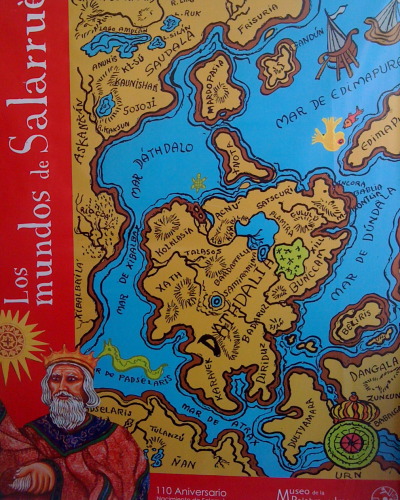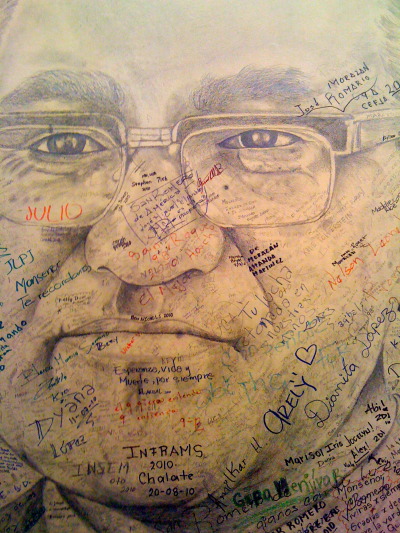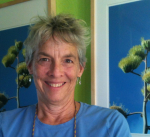Museum of Word and Image
 Monday, October 18, 2010 at 09:27AM
Monday, October 18, 2010 at 09:27AM 
El Museo de la Palabra y la Imagen
The Museum of the Word and the Image, San Salvador
(for more photos see this post's galleries on posterous.com)
Our last visit in the city of San Salvador was to this wonderful museum. (OK THIS IS A CATCH UP POST!) This small museum was a surprise and treat for all of us, even José Bonilla, our country CASS/SEED coordinator – he had never visited it before. The permanent “collection” and first exhibit is a beautifully designed gallery about the life and work of the museum founder, El Salvador writer and artist Salarrué He wrote and illustrated stories about his country, and raised three daughter artists who followed in his footsteps. The magical world of Salarrué inspired the colorful and intriguing style for the museum, which has a charming and strongly visual presentation using simple and comparatively inexpensive display techniques and materials – but with great effect and personality. In a small hallway exhibit, children’s art work, related to Salarrué’s stories and themes, was displayed.
In the adjoining gallery was an exhibit commemorating the 30th anniversary of the assassination of Archbishop Oscar Romero, an event that shook Central America and the world. The simple exhibit of photographs, a simple altar and arrangements of words and images was sobering, and reminded us of the terrible civil war, and how the Archbishop’s death was one factor in bringing world attention to the government’s war against its own people. One panel of photos celebrated the peace treaty that brought an end to the conflict.

Another gallery included a recreation of the Freedom Radio station of the Morazán. This was similar to that of the recreation in the Museo de la Revolución that we had visited. but this one had more photos – and also the collection has all the tapes of the broadcasts of the station.
Perhaps the most important work of the museum is its publications program – among the works published is the Morazán photograph book that led us to the museum after a purchase in the Art Museum bookshop. Videos, books, folios and an ongoing archive of photos, radio broadcasts and other materials related to the war are being carried out in an upstairs library.
We also met a group of students on our way out of the museum who were from the private university that we had visited earlier in the morning. The students interviewed us for comments about the museum for use in a promotional video about the organization. This was another example of the kind of collaborative creative and entrepreneurial work that was going on in El Salvador.






Reader Comments